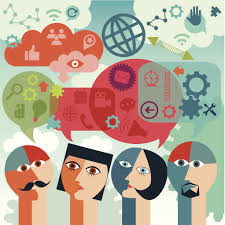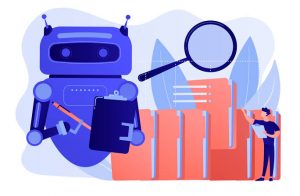
AI AND PATENT LAW
As rightly said by John McCarthy, Artificial Intelligence is the science and engineering of making intelligent machines. With the increasing use of smart devices, AI has become a common part of our everyday lives. It, thus, becomes important to understand the meaning of AI. Artificial intelligence is a branch of computer science which simulates human intelligence in machines, making them capable of performing tasks which require human presence and intelligence. AI is classified into two types, weak and strong. Weak AI or applied AI systems are designed only to perform specific tasks and nothing beyond that such as Siri from Apple. On the other hand, strong AI or general AI system has human cognitive abilities and have the intelligence to respond to different situations like humans thus reducing human effort. The courts in India have not specified the legal status of the AI machinery. The Ministry of Industry and Commerce, has recognized the relevance of AI to the nation and to facilitate the growth of such systems in India, it has constituted an 18-member task force titled “Task Force on AI for India’s Economic Transformation.”

Patent Law in India
The development of AI systems poses a challenging question on the Patent Law. A patent is an intellectual property right granted to an invention. Any person having this exclusive right can prevent others from making, selling or even using the patented invention. Such rights offer monopoly power to the inventor for a limited period of time. In India, the provisions regarding patents is provided under The Patents Act, 1970. Patent rights are granted for a new, inventive product process or article which is able to fulfil the eligibility requirements. The requirements are:
• The invention should be capable of industrial application.
• It should involve an inventive step
• It should possess novelty, that is, it should be different from the existing product
As per Section 3(k) of the Indian Patent Act, computer programs or algorithms are considered non-patentable subject matters. Mathematical models, computer programs and algorithms are foundations of AI which does not hold patent rights. The problem arises because of Section 6 and Section 2(y) of the Patents Act, 1970. Section 6 states that an application for a patent can only be made by the true and first inventor or the persons assigned by such persons. But in Section 2(1)(y) the definition of “true and first inventor” is stated to exclude first importer of an invention to India or a person to whom an invention is first communicated outside India, and nothing further. Thus, these provisions do not necessarily require an inventor to be a natural person. However, in reality, the true and first inventor is always assumed to be a natural person.

Scope of AI in Patent Law
The European Parliamentary Committee had noted that it is important to consider the patent rights in relation of AI systems as it is forecasted that in the times to come AI can surpass human intelligence and then it can pose a challenge to the present system of patent law. AI will play a major role in the evolution of patent law. Natural language processing has been used to generate variants of the existing patent claims thereby enlarging the scope of the invention. Such patent claims of the variants would prevent easily derived ideas from being patented and forming a corpus of prior art which is already available in the public domain. AI would significantly help in the discovery of prior art which would increase the demand of AI in the area of patent law. While an AI system will certainly have access to all the prior art invented and registered, it is incapable of making a judgement that whether can invention can pass the test of novelty. And as far as the requirement of inventive step is concerned, the chance of making innovation to existing models is difficult to ascertain for a person skilled in art, let alone by AI.

Suggested changes
The Indian Patent Act provides a distinction between the inventor and the invention. But in the AI mechanism, there is a hurdle regarding the creation of an invention out of AI enabled system. When a patent right is claimed over an invention which is generated from AI, it is difficult to ascertain who owns the right- the AI machine, owner of the machine or the inventor of the machine.
To solve this issue, a uniform treatment of the AI system is necessary by bringing an amendment to the TRIPS agreement so that all the member nations of the multilateral trading agreements. There is also a requirement to pass the AI Data Protection Act since AI has the capability of surpassing human abilities. Thus, to keep a track of the same, a legislation is needed which can also deal with the civil and criminal liabilities. Furthermore, academic institutions should be aided in establishing research centres to enable the goal of “AI for All.” The jurisprudence related to AI also needs to be developed in order to foster growth and protection of it.
Conclusion
In the case of Bilsk v.Kappos, the Court had denied patents to computer programmes as it was mechanical in nature rather than inventive. However, in India the rigid requirements for granting patents are getting loosened with time. For example, if an AI system creates a software which can be used on machines and entails practical utility then it satisfies the requirement of industrial applicability. There is a dire need to amend the current laws to allow AI generated inventions to be granted patents. But since this issue has not been widely discussed upon, a deeper assessment is required.
By- Mona Das
True?
Great Article